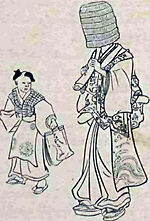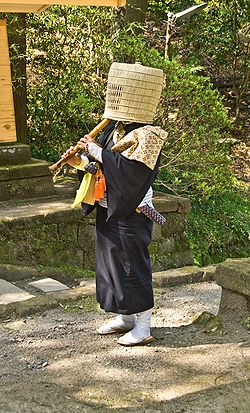- Komusō
-
Un komusō (虚無僧 lit. monje de la nada o del vacío?) era un monje mendigante de la secta Fuke del budismo Zen. Por lo general se les caracteriza por utilizar una canasta de paja en la cabeza como una manifestación de la ausencia de ego y tocando la shakuhachi (una flauta japonesa) utilizada para meditar.
Los komusō practicaban el suizen, un tipo de meditación en la que sólo tocaban piezas en el shakuhagi llamadas honkyoku,
Debido a su vestimenta, los ninja se disfrazaban de komusō para pasar desapercibidos.
Referencias
- Zen in Ten: Easy Lessons for Spiritual Growth. Alexander Simpkins. Tuttle Publishing, 2003. ISBN 0804834504.
Categorías:- Antiguas ocupaciones religiosas
- Budismo japonés
Wikimedia foundation. 2010.


